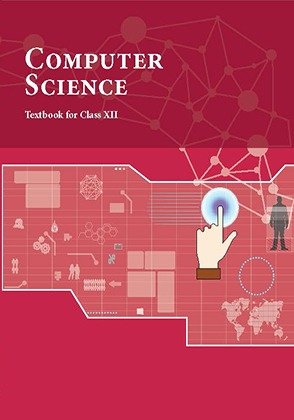In this blog, we will explore the CUET Computer Science Syllabus for 2024 exam. If you’re a 2024 CUET Aspirant and wondering what you’ll be studying for your computer science domain subject, you’ve come to the right place. We’ll break down the topics in a simple, easy-to-understand, and in best-detailed way, so you can get a clear idea about what’s in store for your computer science learning journey. This article aims to provide a detailed outline of the CUET Computer Science Syllabus for the 2024 Exam, along with pdf of the CUET previous year’s Computer Science question paper to help you excel in the exam. Let’s dive in!
Call Now For FREE Classes: 93100-87900
NTA CUET Computer Science Exam Pattern For 2024 Exam
The CUET Examination will be conducted in a computer-based test (CBT) mode. The question paper will be strictly based on the NCERT syllabus for class 12 Computer Science.
| Subjects | No. of questions to be attempted | Duration of the exam |
| Language (any one language out of 13 languages ) | 40 out of 50 questions. | 45 minutes for each language |
| Domain Subjects (maximum of 6 subjects from those 27 subjects) | 40 out of 50 questions. | 45 minutes for each subject |
| General Test | 60 Questions to be attempted out of 75 | 60 Minutes (1 hour) |
NTA CUET Computer Science Marking Scheme 2024
NTA has confirmed the exam pattern & the CUET marking scheme for the upcoming CUET exam in 2024. As per the official CUET notification, 5 marks will be awarded for every correct attempt, and 1 mark will be deducted for every incorrect attempt.
| Total Marks | 200 |
| Correct Answer | +5 |
| Wrong Answer | -1 |
| Unanswered | 0 |
Call Now For FREE Classes: 93100-87900
CUET Computer Science Syllabus For 2024 Exam (Detailed Syllabus)
A clear understanding of the syllabus is essential for success. Here, we break down the CUET computer science Syllabus 2024 exam in detail and provide you with a link to download the PDF version.
Computer Science: Information Practices for Class 12th
Section 1 :
- Exception and File Handling in Python: Exception Handling: syntax errors, exceptions, need of exception handling, user-defined exceptions, raising exceptions, handling exceptions, catching exceptions, Try – except – else clause, Try – finally clause, recovering and continuing with finally, built-in exception classes.
File Handling: text file and binary file, file types, open and close files, reading and writing text files, reading and writing binary files using pickle module, file access modes. - Database Concepts: Introduction to database concepts, difference between database and file system, relational data model: concept of domain, tuple, relation, keys – candidate key, primary key, alternate key, foreign key;
Relational algebra: selection, projection, union, set difference and cartesian product;
- Structured Query Language: Advantages of using Structured Query Language, Data Definition Language, Data Query Language and Data Manipulation Language, Introduction to MySQL, Creating a database using MySQL, Data Types
Data Definition: CREATE TABLE, DROP TABLE, ALTER TABLE, Data Query: SELECT, FROM, WHERE Data Manipulation: INSERT, UPDATE, DELETE Math functions: POWER (), ROUND (), MOD ().
- Computer Networks: Introduction to computer networks, Evolution of networking,
Network types: LAN, WAN, MAN Network devices: Modem, Ethernet Card, Repeater, Hub, Switch, Router, Gateway. Network Topologies: Mesh, Ring, Bus, Star, and Tree topologies Basic concept of MAC and IP Address
Difference between Internet and web
Section B1: Computer Science
- Chapter 1 Exception and File Handling in Python: Exception Handling: syntax errors, exceptions, need of exception handling, user-defined exceptions, raising exceptions, handling exceptions, catching exceptions, Try – except – else clause, Try – finally clause, recovering and continuing with finally, built-in exception classes.
File Handling: text file and binary file, file types, open and close files, reading and writing text files, reading and writing binary files using pickle module, file access modes. - Chapter 2 Stack: Stack (List Implementation): Introduction to stack (LIFO Operations), operations on stack (PUSH and POP) and its implementation in python. Expressions in Prefix, Infix and postfix notations, evaluating arithmetic expressions using stack, conversion of Infix expression to postfix expression
- Chapter 3 Queue: Queue (List Implementation): Introduction to Queue (FIFO), Operations on Queue (INSERT and DELETE) and its implementation in Python.
Introduction to DQueue and its implementation in Python. - Chapter 4 Searching: Searching: Sequential search, Binary search, Analysis of Sequential and Binary Search. Dry run to identify best, worst and average cases. Implementation of searching techniques in Python.
- Chapter 5 Sorting: Overview of sorting techniques, Bubble Sort, Selection Sort and Insertion Sort. Dry run to identify best, worst and average cases. Implementation of sorting techniques in Python.
Hashing: Hash Functions, Collision Resolution, Implementing the Map Abstract Data Type. - Chapter 6 Understanding Data: Data and its purpose, collection and organization; understanding data using statistical methods:
mean, median, standard deviation, variance; data interpretation; visualization of data. - Chapter 7 Database Concepts: Introduction to database concepts, difference between database and file system, relational data model: concept of domain, tuple, relation, keys – candidate key, primary key, alternate key, foreign key;
Relational algebra: selection, projection, union, set difference and cartesian product; - Chapter 8 Structured Query Language: Advantages of using Structured Query Language, Data Definition Language, Data Query Language and Data Manipulation Language, Introduction to MySQL, Creating a database using MySQL, Data Types
Data Definition: CREATE TABLE, DROP TABLE, ALTER TABLE,
Data Query: SELECT, FROM, WHERE
Data Manipulation: INSERT, UPDATE, DELETE
Math functions: POWER (), ROUND (), MOD (). - Chapter 9 Computer Networks: Introduction to computer networks, Evolution of networking,
Network types: LAN, WAN, MAN
Network devices: Modem, Ethernet Card, Repeater, Hub, Switch, Router, Gateway.
Network Topologies: Mesh, Ring, Bus, Star, and Tree topologies
Basic concept of MAC and IP Address
Difference between Internet and web
Section B2: Information Pratices
- Chapter 1 Database Query using SQL:
Math functions: POWER (), ROUND (), MOD ().
Text functions: UCASE ()/UPPER (), LCASE ()/LOWER (), MID ()/SUBSTRING
()/SUBSTR (),LENGTH (), LEFT (), RIGHT (), INSTR (), LTRIM (), RTRIM (), TRIM().
Date Functions: NOW (), DATE (), MONTH (), MONTHNAME (), YEAR (), DAY (), DAYNAME ().
Aggregate Functions: MAX (), MIN (), AVG (), SUM (), COUNT (); using
COUNT (*).Querying and manipulating data using Group by, Having, Order by.
Operations on Relations – Union, Intersection, Minus, Cartesian Product, JOIN - Chapter 2 Data Handling using Pandas – I : Introduction to Python libraries- Pandas, NumPy,
Matplotlib. Data structures in Pandas – Series and DataFrames.
Series: Creation of Series from – and array, dictionary, scalar value; mathematical operations;
Head and Tail functions; Selection, Indexing, and Slicing.
DataFrames: creation – from the dictionary of Series, list of dictionaries, Text/CSV files; display;
iteration; Operations on Rows and columns: add, select, delete, rename; Head and Tail functions;
Indexing usingLabels, Boolean Indexing; Styling & Formatting data, Head and Tail functions; Joining, Merging and Concatenations.
Importing/Exporting Data between CSV files and DataFrames. - Chapter 3 Data Handling using Pandas – II : Descriptive Statistics: max, min, count, sum, mean, median, mode, quartile, Standard deviation, variance.
DataFrame operations: Aggregation, group by, Sorting, Deleting and Renaming Index, Pivoting.
Handling missing values – dropping and filling.
Importing/Exporting Data between MySQL database and Pandas. - Chapter 4 Plotting Data using Matplotlib: Purpose of plotting; drawing and saving t h e following types of plots using Matplotlib – line plot, bargraph, histogram, pie chart, frequency polygon, box plot, and scatter plot.
Customizing plots: color, style (dashed, dotted), width; adding label, title, and legend in plots. - Chapter 5 Introduction to Computer Networks:
Introduction to Networks, Types of networks: LAN, MAN, WAN.
Network Devices: modem, hub, switch, repeater, router, gateway
Network Topologies: Star, Bus, Tree, Mesh.
Introduction to Internet, URL, WWW, and its applications- Web, email, Chat, VoIP.
Website: Introduction, the difference between a website and webpage, static vs dynamic web page, webserver, and hosting of a website.
Web Browsers: Introduction, commonly used browsers, browser settings, add-ons and plugins,cookies. - Chapter 6 Societal Impacts: Digital footprint, Etiquettes for Net surfing and for communicating through social media, data protection, Intellectual Property Rights (IPR) and their violation, plagiarism licensing and copyrights, Free and Open Source Software (FOSS), Cybercrime and cyber laws, hacking, phishing, cyberbullying, Overview of Indian IT Act, preventing cybercrime.
E-waste its a hazard and management
Awareness about health concerns related to the usage of technology like effect on eyesight,physiological issues, and ergonomic aspects. - Chapter 10 Data Communication: Concept of communication, Types of Data Communication, switching techniques
Communication Media: Wired Technologies – Twisted pair cable, Co-axial cable, Ethernet Cable, Optical Fibre;
Introduction to mobile telecommunication technologies
Wireless Technologies – Bluetooth, WLAN, Infrared,
Microwave
Network Protocol: Need for Protocol, Categorization and Examples of protocol, HTTP, FTP, IP, PPP; electronic mail protocol
Concept of Channel, Bandwidth (Hz, KHz, MHz) and Data Transfer rate (bps, Kbps, Mbps, Gbps,Tbps)
Call Now For FREE Classes: 93100-87900
NCERT Computer Science Textbook Class 12th for 2024 CUET Exam


NTA CUET Computer Science Syllabus 2024 PDF Download
The NTA (National Testing Agency) conducts the CUET (Common University Entrance Test) to assess students’ abilities for various university admissions. By providing the computer science syllabus in a downloadable PDF format, we aim to make it convenient and time-saving for aspiring students like you to access and prepare for the CUET Exam 2024 thoroughly.
Download PDF:- NTA CUET Computer Science Syllabus 2024
FAQ: CUET Computer Science Syllabus For 2024 Exam
Are there any conditions for the computer science program at CUET?
Yes, prospective computer science students must meet the specified academic requirements for admission to the CUET program.
Is computer science a challenging subject for beginners?
While computer science can be challenging, the CUET computer science Syllabus 2024 is structured to provide gradual learning and support, making it accessible for beginners.
Does CUET offer scholarships for computer science students?
CUET provides various scholarships and financial aid opportunities. Eligible students can apply for these scholarships based on specific criteria.
How often does CUET update its computer science syllabus?
CUET typically revises its computer science syllabus every few years to keep up with industry trends and advancements
How important is it to practice time management during the exam?
Time management is crucial as the test duration is limited. Practice solving CUET’s previous year’s question papers within the specified time frame to improve your speed and accuracy.
Call Now For FREE Classes: 93100-87900

